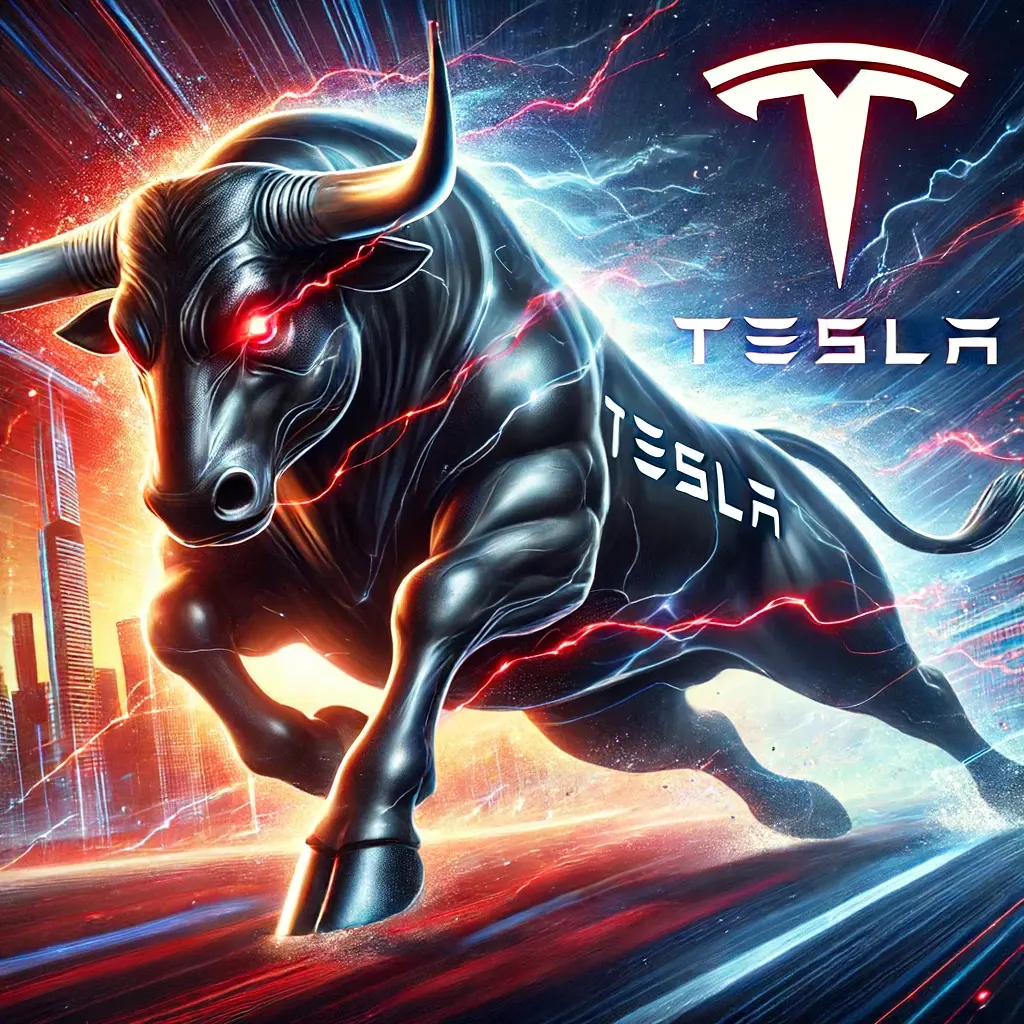In recent months, a deluge of alerts and notifications from social media, TikTok, and various news sources has inundated investors with grandiose claims about a handful of companies poised to grow exponentially by 2030. Among these, Tesla frequently finds itself at the center of attention. With influential figures like Tesla CEO Elon Musk and Ark Invests Cathie Wood making bullish projections, it’s easy for investors to get swept up in the excitement. However, a closer look at these claims reveals a need for caution and critical analysis.
Examining the Tesla Bold Predictions
Elon Musk has repeatedly stated that Tesla could achieve a market capitalization of $25 trillion, while Cathie Wood of ARK Invest has forecasted a share price of $2,600. While these targets are not entirely out of the realm of possibility, they require substantial leaps in Tesla’s performance metrics. As of today, Tesla’s market cap stands at $567.71 billion with a share price of $178.01, reflecting a Price-to-Earnings (P/E) ratio of 45.41. This indicates that a significant amount of growth is already priced in.
To contextualize these numbers, Tesla’s revenue for the trailing twelve months is approximately $94.7 billion, with gross profits of $16.8 billion. In terms of vehicle sales, Tesla sold 1.13 million units in 2022 and 1.8 million in 2023, though Q1 2024 saw a slight dip compared to Q1 2023 with 386,000 vehicles sold.
Tesla: Calculating Required Growth
For Tesla to reach a $25 trillion market cap, its valuation would need to increase by approximately 44 times its current level. Similarly, achieving a share price of $2,600 implies a market cap well above $3 trillion, requiring an approximately fivefold increase.
To better understand these projections, let’s break down the numbers to see how many cars Tesla would need to sell to achieve these targets.
Revenue and Profit Targets
Assuming Tesla maintains its current profit margins and average selling price per vehicle, we can estimate the number of vehicles that would need to be sold:
- Current Average Selling Price (ASP): Let’s assume Tesla’s ASP per vehicle is around $50,000.
- Revenue per Vehicle: Based on the ASP, each vehicle contributes $50,000 to Tesla’s revenue.
- Profit Margin: Tesla’s gross profit margin is approximately 17.8%.
Using these assumptions, we can calculate the revenue and profit needed to reach a market cap of $25 trillion:
- Target Market Cap: $25 trillion
- Current Market Cap: $567.71 billion
- Required Market Cap Increase: $25 trillion / $567.71 billion ≈ 44 times
Vehicle Sales for $25 Trillion Market Cap
Elon’s bullish prediction of $25 trillion we need to assume Tesla would increase its revenue and profits proportionally to its market cap increase, we can estimate the number of vehicles needed:
- Current Revenue: $94.7 billion
- Required Revenue: $94.7 billion * 44 ≈ $4.17 trillion
- Revenue per Vehicle: $50,000
To achieve $4.17 trillion in revenue, Tesla would need to sell:
Vehicle Sales for $2,600 Share Price
Cathie Wood’s projection of a $2,600 share price would imply a market cap of approximately:
Assuming Tesla has roughly 1 billion shares outstanding, this gives us a target market cap of $2.6 trillion. To achieve this:
- Required Market Cap Increase: $2.6 trillion / $567.71 billion ≈ 4.58 times
- Required Revenue: $94.7 billion * 4.58 ≈ $433.2 billion
To achieve $433.2 billion in revenue, Tesla would need to sell:
Tesla’s Self-Driving Car Conundrum
One of the key pillars of Tesla’s ambitious growth forecasts is the potential of its self-driving car technology. The vision of a world dominated by autonomous vehicles, with Tesla leading the charge, is compelling. However, several significant hurdles remain:
- Regulatory Approvals: Self-driving cars must navigate a complex web of regulations that vary significantly by region. Obtaining approval across multiple jurisdictions is a lengthy and uncertain process.
- Insurance and Liability: The insurance industry will need to adapt to a world where vehicles, rather than human drivers, are responsible for accidents. Determining liability in crashes involving autonomous vehicles is a complex legal challenge.
- Consumer Trust: Despite advancements in technology, consumer trust in self-driving cars is a critical barrier. Public perception can be easily swayed by high-profile accidents, regardless of fault. Until a significant portion of consumers feel comfortable entrusting their safety to autonomous systems, widespread adoption will be limited.
Legal Implications of Autonomous Vehicles: Tesla’s Liability Concerns
As Tesla and other companies continue to advance the technology of self-driving cars, the question of liability in the event of an accident becomes increasingly significant. The transition from human-driven vehicles to autonomous ones introduces a complex web of legal and insurance challenges that must be addressed.
Shifting Liability
In traditional vehicle accidents, liability typically falls on the driver. However, with autonomous vehicles, the responsibility could shift significantly. If a self-driving car is at fault in an accident, questions arise about who is liable: the car owner, the manufacturer, the software developer, or the entity providing the self-driving technology.
- Manufacturer Liability: If a self-driving car causes an accident due to a malfunction or software error, the manufacturer (Tesla, in this case) could be held liable. This is because the car’s operation is fundamentally controlled by its autonomous systems, which are designed and maintained by the manufacturer.
- Software Provider Liability: In cases where third-party software is involved, the liability could extend to the developers of that software. However, for companies like Tesla that control both the hardware and software, the liability would likely remain with the manufacturer.
- Shared Liability: There may also be scenarios where liability is shared between the vehicle owner and the manufacturer, depending on the circumstances of the accident and the level of control the owner has over the vehicle.
Potential Legal Challenges for Tesla
Given the complexity of autonomous driving technology, it is conceivable that Tesla could face lawsuits if their self-driving cars are involved in accidents. Here are a few potential legal challenges:
- Product Liability Claims: Tesla could be sued for product defects if it is determined that a malfunction in the self-driving system caused an accident. This could encompass issues with the sensors, software algorithms, or other critical components.
- Negligence Claims: Plaintiffs might argue that Tesla was negligent in the design, testing, or deployment of their autonomous driving technology. This could include claims that Tesla failed to foresee certain driving scenarios or that the technology was released prematurely.
- Breach of Warranty: If Tesla’s autonomous vehicles fail to perform as advertised, customers could file breach of warranty claims, seeking compensation for damages incurred due to the malfunctioning of the vehicle.
Financial and Operational Impact
The financial repercussions of such lawsuits could be substantial. Tesla might face significant legal fees, settlements, or judgments if found liable. Protracted litigation could also drain resources and divert attention from core business activities, potentially stalling innovation and growth.
Moreover, the reputational damage from being embroiled in high-profile legal battles could impact consumer trust and investor confidence. In the worst-case scenario, the cumulative effect of ongoing litigation and financial penalties could pose a severe threat to Tesla’s financial stability.
Tesla’s Optimus Robot Ambition
Another intriguing aspect of Tesla’s future vision is the development of the Optimus robot. While the concept of affordable, everyday robots is fascinating, the practical implementation is still far off. Key challenges include:
- Hardware and Software Development: Current robot technology lacks the performance, dexterity, and reliability required for everyday tasks.
- Market Demand: The idea of a $10,000 robot in every household hinges on widespread economic prosperity and job security—both of which could be threatened by automation.
- Adoption Timeline: Even if the technology matures, it will take years, if not decades, for robots to become ubiquitous in homes and businesses.
A Pragmatic Approach to Investing
For investors, the allure of potential 100x returns can be irresistible. However, it’s crucial to ground investment decisions in reality and current performance rather than speculative future scenarios. Here are some guidelines to consider:
- Value Companies Based on Present and Near-Term Performance: Assess companies like Tesla based on their current operations and foreseeable future developments. While it’s essential to consider long-term potential, avoid making investment decisions based solely on hype and speculative projections.
- Diversify Your Portfolio: Don’t put all your eggs in one basket. Even if you believe strongly in a company’s future, diversify your investments to mitigate risk.
- Avoid the Hype: Be cautious of sensational claims from social media, influencers, or news sources. Always do your own research and make informed decisions based on sound analysis.
- Monitor Regulatory and Market Developments: Stay informed about regulatory changes, market trends, and technological advancements that could impact your investments.
- Invest Incrementally: If you have high confidence in a company’s long-term potential, consider investing incrementally on market dips rather than making large, lump-sum investments.
The Outrageous Claims for Tesla
While the future of Tesla holds exciting possibilities, it’s essential to approach such investments with a balanced perspective. The company’s ambitious targets for market cap and share price are contingent on numerous factors, including technological advancements, regulatory approvals, and market acceptance—many of which remain uncertain.
It is important to note that I am not an expert, nor am I advising you to buy or sell Tesla stock. Even if these lofty claims are not achieved, there is still potential for a healthy return on investment. However, I am not making any specific predictions about Tesla’s future stock price.
As an investor, focusing on the present and near-term performance of a company, diversifying your portfolio, and staying informed will serve you better than chasing after speculative and sensational claims. Remember, investing is a marathon, not a sprint. Building a solid, long-term investment strategy based on sound principles will ultimately lead to success.
In summary, while the future of autonomous vehicles and other technological advancements at Tesla is bright, it is essential to approach investments in this sector with a balanced perspective, mindful of the significant legal and financial challenges that lie ahead. Make your own evaluations and investment decisions by staying informed and critically analyzing the potential legal and financial implications to avoid the pitfalls of speculative hype.
Happy Investing!


